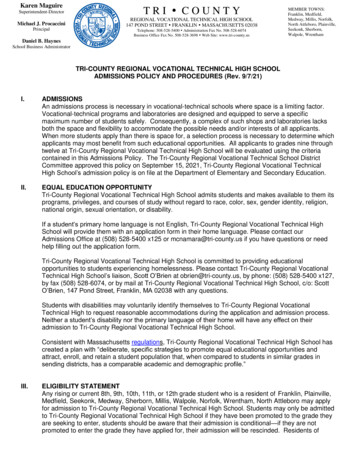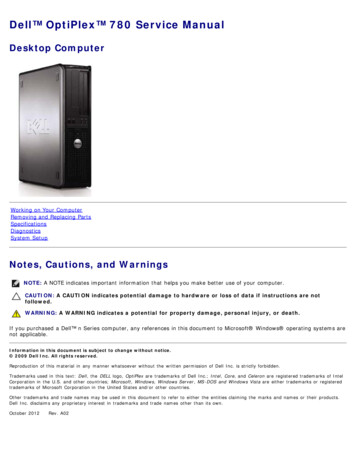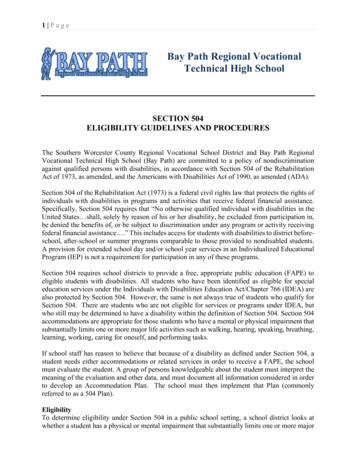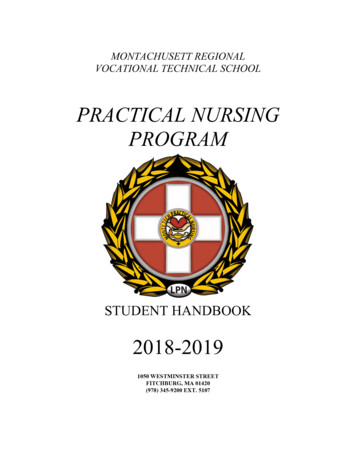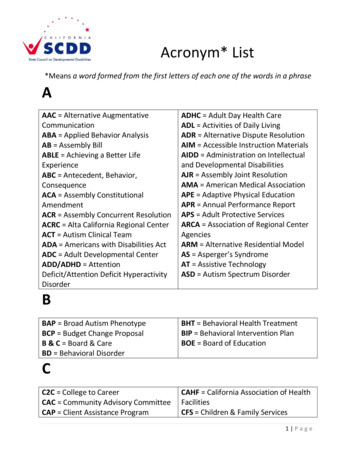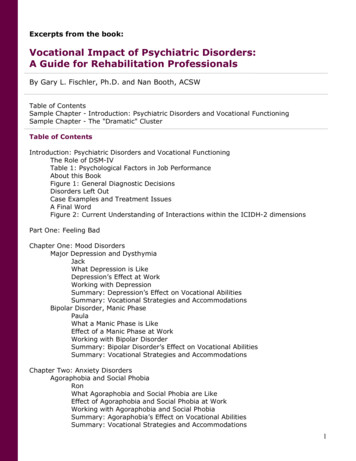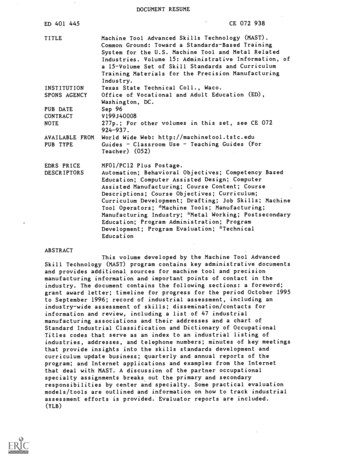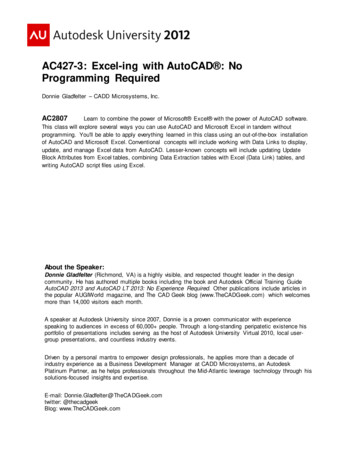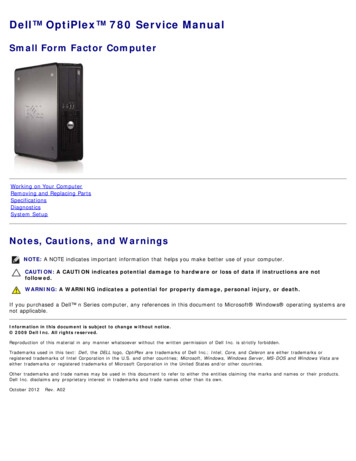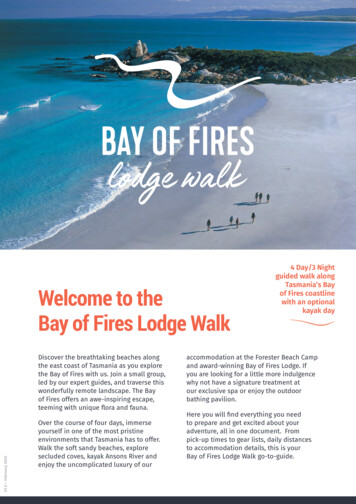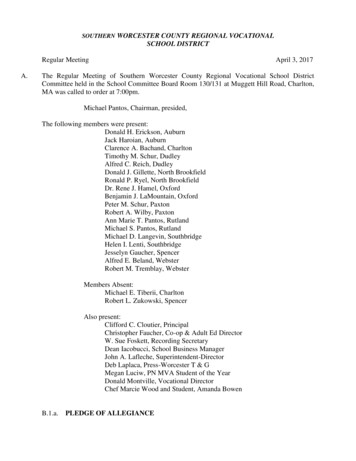
Transcription
BAY PATH REGIONAL VOCATIONALPRACTICAL NURSING ACADEMY2022-2023HANDBOOKAUBURN CHARLTONDUDLEY NORTH BROOKFIELD OXFORD PAXTON RUTLANDSOUTHBRIDGE SPENCER WEBSTERSouthern Worcester County Regional Vocational School DistrictBAY PATH REGIONAL VOCATIONAL TECHNICAL HIGH SCHOOL57 Old Muggett Hill RoadCharlton, Massachusetts 01507-1331(508) 248-5971 – (508) 987-0326 EXT. 1674FAX (508) 248-4747Website: www.baypath.netAdopted May 2009, Revised March, 2017-65-
IntroductionDear Bay Path Practical Nursing Student,The purpose of this handbook is to familiarize students with the philosophy and outcomes of the academyand to facilitate the learning process by outlining the academic, clinical, and behavioral policies andpractices of the Nursing Academy. Policies specific to the duties and responsibilities of students enrolled inthe Practical Nursing Academy are presented.These policies and practices are subject to review. Faculty reserves the right to review and revise anypolicy it deems necessary. Enrolled students will be notified of any policy changes.Only one copy of this handbook is provided, additional copies can be downloaded from the Bay Pathwebsite, or an additional hardcopy may be purchased at the PN office for 10 each.The Practical Nursing Faculty wishes you much success as you begin the process of becoming a LicensedPractical Nurse.Adopted May 2009, Revised 9/17, 7/18, 1/19, 8/19, 12/19, 10/20, 7/21, 6/22-2-
BAY PATH REGIONAL VOCATIONAL PRACTICAL NURSING ACADEMY HANDBOOKTable of ContentsSECTION I: INTRODUCTION AND ACADEMY OVERVIEW------------------------------------------ -9Program ----------------------- -9Curriculum --------------------- -------------------------------------- ------------------------------------ -10Graduation ----------------- ---------------------------------------- --------------------------------------- -10Lifelong ------------------------- --------------------------------------- ---------------------------------------- -------------------------------------- -10Practical Nursing ------------ -11Practical ------------------------- -11Professional Conduct and Affective ------------------------------------- --------------------------------------- --------------------------------------- -10Student Behavioral -------- -13-SECTION II: ADMISSION POLICY ---------------------- -18Accepted Student -------- -19Admission ------------------ -18Advanced -------------------- -26Auditing a ---------------------- -27Course ------------------------ -26Criminal Offender Record Information/Sexual Offender Record Information CORI/SORI----------------------- -19-Adopted May 2009, Revised 9/17, 7/18, 1/19, 8/19, 12/19, 10/20, 7/21, 6/22-3-
Deferred ---------------------- -25Educational -------------------- -27Good Moral Character --- ----------------------------------------- -28Military Service -------------- ------------------------------------- -25Technical ---------------------- -21Title 38 . 27Transfer -------------------------- -26Valor ------------------------------- -25-SECTION III: FINANCIAL ------------------------------ ---------------------------------------- -31Financial Aid ----------------- -29Financial Aid Satisfactory Academic -------------------------------------- -30Financial Aid ----------------- -30Financial -------------------------- -28Readmission - Financial Aid ------------------------------------------------- -30Refund ---------------------------- -31Reinstatement after ------ -31Tuition Policy for ----------- -31Withdrawal-Financial Aid - -30-SECTION IV: ACADEMIC ------------------------------ -32Absence for Religious --------37Academic ------------------------ -32Academy Progression and - -41-Adopted May 2009, Revised 9/17, 7/18, 1/19, 8/19, 12/19, 10/20, 7/21, 6/22-4-
Academy --------------------- ---------------------------------------- -43Assigning an Incomplete ---- -------------------------------------- -36ATI Online Skills ------------- -41Class and Lab ---------------- -36Classroom ------------------------ ------------------------------------ -34Course ------------------------ -43Courses with a Clinical or Laboratory --------------------------------- -42Exam ----------------------- -39Exam ---------------------------- -39Exceeding Allowed Absence Time from the --------------------------- -37Excused ------------------------ -37Extended Break Times/Early Departures – ---------------------------- -37Grading Courses with Clinical and Lab ----------------------------------- -42Graduation ----------------- -44Guidelines for Electronic --------------------------------------------- -------------------------------- -42Proficiency ----------------------- -------------------------------------- ---------------------------------------- -40Retention ------------------------ -40Shadow ------------------------- -41Social --------------------------- -34Student Status ---------------- -38Taking a Course Out of ---- -42Use of ------------------------- ------------------------------------- -43Withdrawal from a Course with a Clinical -----------------------------43Withdrawal from a Non-Clinical ------------------------------------------- -43Adopted May 2009, Revised 9/17, 7/18, 1/19, 8/19, 12/19, 10/20, 7/21, 6/22-5-
SECTION VI: CLINICAL -------------------------------- -45Accommodation for Handicap/Disability ------------------------------ -46Appearance and Dress ------ -48Change in Health -------------- -46Clinical Attendance ----------- -50Clinical Make-Up Assignments -------------------------------------------- -50Clinical ------------------------ -47Clinically Unsafe ------------- -------------------------------------- ----------------------------------------- --------------------------------------- -45Drug Screening ----------------- -46Emergency ----------------------- -46Evaluation of Clinical ----- -52Exceeding Allowed Clinical ------------------------------------------------- -51Health and Immunizations ----------------------------------------------- -47Health ---------------------------- -46Medication Calculation ------ -50Performance ------------------ -52Procedure for Unsafe ------ -54Professional Liability ------- -47Snow/Weather Emergency - -48Statement of ------------- -46Student Status ---------------- ------------------------------------- -48-SECTION VII: GENERAL SCHOOL ------------------- -55CAMPUS SECURITY, CRIME AWARENESS, DRUG FREE WRORKPLACE GENERAL POLICY-------------------------- -62Care of School ---------------- - 57-Adopted May 2009, Revised 9/17, 7/18, 1/19, 8/19, 12/19, 10/20, 7/21, 6/22-6-
Counseling Outside of ------- -62Drug and Alcohol Abuse Prevention Academy Policy (P.L. 101-226) -------------------------------------------------- -62Fire --------------------------------- -------------------------------------- -57Hazing .59Internet Policy for ----------- -55Internet Use-Terms and --- -55Multiple ----------------------- -61Non-Violent ------------------- -61Refusing an Administrator/Faculty Member -------------------------- ---------------------------------------- ---------------------------------------- -57Sexual Harassment ------------ -60Smoking on School ---------- -57Students Under the Influence of Drugs, Alcohol or ------------------- -58Violent -------------------------- -61Weapons ------------------------- -61ZERO TOLERANCE --------- -58-SECTION V: STUDENT RIGHTS AND ------------ -70Bay Path Student -------------- -70Challenge of ------------------- -72Copies of ----------------------- -71Disclosure of Educational Records to ------------------------------------- ---------------------------------------- -70Grade --------------------------- -76Graduation ------------------ -75Inspection of ------------------ -71Maintenance of ----------------71Mock Code --------------------- -74-Adopted May 2009, Revised 9/17, 7/18, 1/19, 8/19, 12/19, 10/20, 7/21, 6/22-7-
------------------------------------- -74Right of the School to Refuse ------------------------------------------------ -71Right to File a ---------------- -73STUDENT AGREEMENT ----- -77STUDENT AGREEMENT ----- -79Student ------------------------ -75Student ----------------------- -74UNICEF ---------------------------- -75-Adopted May 2009, Revised 9/17, 7/18, 1/19, 8/19, 12/19, 10/20, 7/21, 6/22-8-
BAY PATH REGIONAL VOCATIONAL PRACTICAL NURSING ACADEMY HANDBOOKSECTION I: INTRODUCTION AND ACADEMY OVERVIEWPurposePractical Nursing students enter the Academy with a variety of life experiences, knowledge, and learning needs.The Practical Nursing Faculty at Bay Path are committed to providing students with a solid foundation that willenable them to continue their education and further their career by articulating into the professional nursingeducation program.The Bay Path RVTHS PN Academy is a 40-week, full-time evening program that will prepare graduates for theNCLEX-PN licensure exam. Upon program completion, graduates will receive a certificate in Practical Nursing.Licensed Practical Nurses are essential members of the health care team. In collaboration with NursePractitioners, Physicians, Registered Nurses, and Unlicensed Assistive Personnel (UAP), Licensed Practical Nurses(LPN) manage caring interventions to individuals and families with common well-defined health care needs.LPNs enjoy employment in a variety of settings, such as: long-term care facilities, hospitals, homes, physicianoffices, and clinics.Program ObjectivesA graduate of Bay Path’s PN Academy will be eligible to take the National Council Licensure Exam for PracticalNurses (NCLEX-PN). Upon completion, the beginning graduate practical nurse will be able to:1. Apply nursing process and critical thinking to determine and meet the health care needs of culturallydiverse clients across the lifespan.2. Coordinate safe and effective caring interventions that are evidence based and consistent withestablished nursing practice to meet the human needs of culturally diverse clients across the lifespan.3. Utilize therapeutic communication effectively with patients, families, significant others, and members ofthe health care team to deliver care to and promote wellness in clients and groups of clients.4. Demonstrate professional comportment and legal and ethical accountability that is within establishedparameters.5. Explain the importance of continued professional growth and a commitment to life-long learning.Curriculum ThreadsCurriculum threads are integrated throughout the curriculum and increase in complexity as the programprogresses. Curriculum threads include: nursing process, critical thinking, caring interventions, evidence basednursing practice, safety, cultural diversity, communication, legal and ethical accountability, health education,developmental considerations, nutrition, pharmacodynamics, professional comportment, and professionalgrowth.The Academy uses Virginia Henderson’s definition of nursing as a foundation to define the nurse’s role asseeking to meet the needs of individuals. Concepts from Abraham Maslow assist students in prioritization ofthose unmet needs. Nursing process theory provides students with a systematic framework to assess, diagnose,plan, implement, and evaluate the care they provide to clients. Courses in physical, biological and socialsciences are incorporated with theories of growth and development and culturally sensitive care to allowgraduates to personalize and individualize the care they give.Adopted May 2009, Revised 9/17, 7/18, 1/19, 8/19, 12/19, 10/20, 7/21, 6/22-9-
MissionBay Path Regional Vocational Practical Nursing Academy is committed to providing students with a qualityeducation that will enable them to secure employment as entry-level nurses and become contributing membersto the Southern Worcester County. Through an integrated curriculum, graduates of the Academy will attain theknowledge, skills, and professional attitudes necessary to successfully pass the NCLEX-PN examination andprovide nursing care to diverse, multicultural populations with well-defined health care needs across the lifespan.PhilosophyThe Practical Nursing Academy is guided by the philosophy of Bay Path Regional Vocational Technical HighSchool. By fusing academic, vocational, and technical training, the Practical Nursing Academy’s philosophymirrors that of the vocational and technical school and serves the multicultural communities of the SouthernWorcester County in the following manner: the Academy provides residents of the Southern Worcester Countyaccess to postsecondary education and life-long learning; the Academy’s graduates gain the knowledge andskills necessary to become employed as Licensed Practical Nurses, thus providing economic and personalfulfillment to the individual; and the Academy serves the growing health care needs of the community byincreasing the number of practical nurses available to care for its citizens. The faculty’s beliefs - about nursing,individuals, environment, practical nursing education, the role of the practical nurse, and lifelong learning - areconsistent with the philosophy of the school.NursingNursing is the art and science of caring, which is based on biological, behavioral, and social sciences that focuson satisfying the unmet needs of individuals. The nurse uses critical thinking and the nursing process tointegrate concepts so that he/she may plan, implement, and evaluate care that will meet the needs ofindividuals and allow them to become as independent as possible. The faculty believes nursing can be definedby, “The unique function of the nurse is to assist the individual, sick or well, in the performance of thoseactivities contributing to health or its recovery (or to peaceful death) that he would perform unaided if he hadthe necessary strength, will, or knowledge" (Henderson, 1966).IndividualsIndividuals are unique holistic organisms with integrated physical, psychosocial, spiritual, and culturalcharacteristics. All individuals have similar human needs, forming a hierarchy with higher needs emerging asbasic physiological needs are met. The faculty believes individuals have the right to self-determination and tomake informed decisions as to how the nurse should assist him/her to meet any unmet needs.EnvironmentThe environment consists of all external conditions and influences that affect life and development. Theenvironment of an individual is in a continual state of change and is influenced by many factors. These changesimpact the health of an individual, which alters the ability of that individual to meet their basic human needs.SocietyA society is a complex system consisting of a diverse population of cultures, races, socioeconomic levels,religion, and lifestyles. Nurses must respect, interact with, and be knowledgeable of these influences on his/herpractice. Changes in government policies, economics, social concerns, and health care needs of aggregatepopulations impact the environment in which the nurse practices.Adopted May 2009, Revised 9/17, 7/18, 1/19, 8/19, 12/19, 10/20, 7/21, 6/22- 10 -
HealthHealth is an optimal state of wellness that occurs when basic human needs are met. Health is a dynamic statethat exists on a continuum from optimal wellness to death and is influenced by age, culture, physical andemotional status. The goal of nursing is to promote, maintain, and restore health.Practical Nursing EducationThe faculty believes that the Practical Nursing education is a dynamic and interactive process that works bestwhen curriculum progresses from simple to complex concepts, the clinical experience closely aligns with didacticmaterial, and the entire curriculum blends together to create a cohesive Academy.Practical NursingThe Practical Nurse is an important part of the health care team providing, under supervision, basic therapeutic,restorative, and preventative nursing care using the nursing process and purposeful interventions to assist theclient to attain and maintain the best possible level of wellness. The Practical Nurse provides safe andcompetent care for clients across the lifespan.Lifelong LearningThe practice of nursing takes place in an ever-changing health care system with an evolving body of knowledgeand requires dedication to the continued acquisition of new knowledge and skill. Knowledge and skills aredynamic and the nurse must continuously update in order to maintain competency.Graduation CompetenciesGraduates of the Bay Path Regional Vocational Practical Nursing Academy are competent in their ability to utilizethe nursing process to provide caring interventions based on the criteria established by National Association forPractical Nurse Education and Service, Inc.Professionalism1. Comply with the ethical, legal, and regulatory frameworks of nursing and the scope of practice asoutlined in the LP/VN nurse practice act of the specific state in which licensed.2. Utilize educational opportunities for lifelong learning and maintenance of competence.3. Identify personal capabilities and consider career mobility options.4. Identify own LP/VN strengths and limitations for the purpose of im
The Practical Nursing Academy is guided by the philosophy of Bay Path Regional Vocational Technical High School. By fusing academic, vocational, and technicaltraining, the Practical Nursing Academy's philosophy mirrors that of the vocational and technical school and serves the multicultural communities of the Southern
